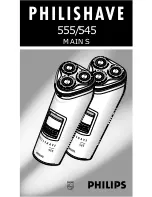
Please follow all the precautions listed below for safety and to reduce the
risk of fire, injury or electrical shock.
Read all the instructions before operating the appliance and keep them for future
reference. If you pass the product on to a third party, include these instructions.
Always unplug the sewing machine from the mains supply when removing covers,
lubricating, or when making any user or servicing adjustments mentioned in the
instruction manual.
Do not unplug the unit by pulling on the cord. To unplug, grasp the plug, not the cord.
Ensure there is adequate room to operate the unit.
Never operate this appliance if it has a damaged cord or plug, if it is not working
properly, if it has been dropped or damaged, or dropped into water. Return the appli-
ance to a competent service centre for examination, repair, electrical or mechanical
adjustment.
This appliance is not intended for use by persons (including children) with reduced
physical, sensory or mental capabilities, or lack of experience and knowledge, unless
they have been given supervision or instruction concerning use of this appliance by a
person responsible for their safety.
Children should be supervised to ensure that they do not play with the appliance
Do not use outdoors or in damp or wet conditions.
Before operating, ensure that the surface on which the unit is placed is stable.
Never operate the appliance with any air openings blocked. Keep all ventilation
openings of the sewing machine and foot controller free from accumulations of lint,
dust, and loose cloth.
Do not insert any object into ventilation slots.
Keep fingers away from all moving parts. Special care is required around the sewing
machine needle.
Always use the proper needle plate. The wrong plate can cause the needle to break.
Do not use broken, deformed or blunt needles.
Do not pull or push fabric while stitching. It may deflect the needle causing it to break.
Switch the sewing machine off when making any adjustments in the needle area,
such as threading the needle, changing needles, threading bobbins, changing the
presser foot and the like.
Do not operate where aerosol spray products are being used or where oxygen is being
administered.
This appliance is only for household use. Industrial or professional use will invalidate
the warranty.
Do NOT use this appliance for any purpose not covered by the instructions.
THE APPLIANCE MUST NOT BE LEFT UNATTENDED WHILE IT IS CONNECTED TO THE
SUPPLY MAINS.
ELECTRICAL INFORMATION
Before using this appliance ensure that the voltage of your electricity supply is the
same as that indicated on the appliance.
The means of disconnecting this appliance from the mains supply is the mains plug.
This should be unobstructed and readily operable at all times
SPECIFICATIONS
Voltage Rating: 220 -240V AC, 50Hz
Power Consumption: XXXXXXXXX
Noise Performance ( SPL) : 75dBA
Net Weight: XXXXX
IMPORTANT SAFETY GUIDE
Page 2



































